2807 Karl Marx, provisional designation 1969 TH6, is a carbonaceous Dorian asteroid from the central region of the asteroid belt, approximately 17 kilometers in diameter. It was discovered on 15 October 1969, by Russian astronomer Lyudmila Chernykh at the Crimean Astrophysical Observatory in Nauchnyj on the Crimean peninsula. The asteroid was later named for the German philosopher Karl Marx.
1764 Cogshall, provisional designation 1953 VM1, is a carbonaceous Themistian asteroid from the outer regions of the asteroid belt, approximately 26 kilometers in diameter. It was discovered on 7 November 1953, by astronomers of the Indiana Asteroid Program at Goethe Link Observatory in Indiana, United States. The asteroid was named after Wilbur Cogshall, professor of astronomy at Indiana University.
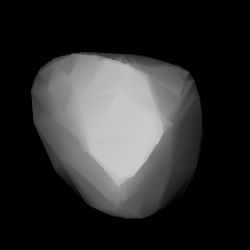
1165 Imprinetta, provisional designation 1930 HM, is a carbonaceous Meliboean asteroid from the outer regions of the asteroid belt, approximately 49 kilometers (30 mi) in diameter. It was discovered on 24 April 1930 by Dutch astronomer Hendrik van Gent at the Union Observatory in Johannesburg, South Africa. The asteroid was named after Imprinetta Gent, wife of the discoverer.
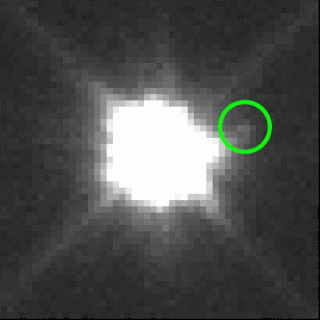
3548 Eurybates is a carbonaceous Jupiter trojan from the Greek camp and the parent body of the Eurybates family, approximately 68 kilometers in diameter. It is a target to be visited by the Lucy mission in August 2027. Discovered during the second Palomar–Leiden Trojan survey in 1973, it was later named after Eurybates from Greek mythology. This C-type asteroid is among the 60 largest known Jupiter trojans and has a rotation period of 8.7 hours. Eurybates has one kilometer-sized satellite, named Queta, that was discovered in images taken by the Hubble Space Telescope in September 2018.
4585 Ainonai is a dark Chloris asteroid, approximately 11 kilometers in diameter, located in the central region of the asteroid belt. It was discovered on 16 May 1990, by Japanese amateur astronomers Kin Endate and Kazuro Watanabe at the Kitami Observatory in eastern Hokkaidō, Japan. The presumed carbonaceous C-type asteroid has a longer than average rotation period of 38.3 hours. It was named for the Japanese town of Ainonai, located near the discovering observatory.

2708 Burns is a carbonaceous Themistian asteroid from the outer regions of the asteroid belt, approximately 19 kilometers in diameter. It was discovered on 24 November 1981, by American astronomer Edward Bowell at the Anderson Mesa Station near Flagstaff, Arizona, in the United States. It was named after American planetary scientist Joseph A. Burns. The likely elongated B-type asteroid has a rotation period of 5.3 hours.
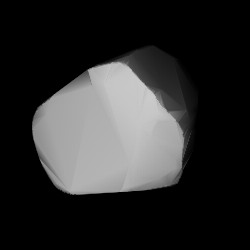
5196 Bustelli is a stony Eunomia asteroid from the central regions of the asteroid belt, approximately 6 kilometers kilometers in diameter. It was discovered on 30 September 1973, by Dutch astronomers Ingrid and Cornelis van Houten at Leiden, and Tom Gehrels the Palomar Observatory. The S-type asteroid was named after Italian-Swiss artist Franz Anton Bustelli.
1308 Halleria, provisional designation 1931 EB, is a carbonaceous Charis asteroid from the outer regions of the asteroid belt, approximately 43 kilometers in diameter. It was discovered on 12 March 1931, by German astronomer Karl Reinmuth at the Heidelberg-Königstuhl State Observatory. The asteroid was named after Albrecht von Haller a Swiss physician, botanist and poet.
1452 Hunnia, provisional designation 1938 DZ1, is a carbonaceous Meliboean asteroid from the outer regions of the asteroid belt, approximately 20 kilometers in diameter. It was discovered on 26 February 1938, by Hungarian astronomer György Kulin at the Konkoly Observatory in Budapest. The asteroid was named in honor of the Hungarian nation.
4525 Johnbauer, provisional designation 1982 JB3, is dark Mitidika asteroid from the central regions of the asteroid belt, approximately 10 kilometers in diameter. It was discovered on 15 May 1982, by astronomer couple Eleanor and Eugene Shoemaker, as well as Peter Wilder at the Palomar Observatory in California, United States. The asteroid was named after John Bauer, physics teacher at San Diego City College.
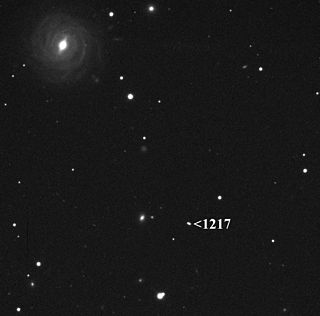
1217 Maximiliana, provisional designation 1932 EC, is a background asteroid from the inner regions of the asteroid belt, approximately 17 kilometers (11 mi) in diameter. It was discovered on 13 March 1932, by Belgian astronomer Eugène Delporte at the Royal Observatory of Belgium in Uccle. The asteroid was named in memory of Max Wolf, a German astronomer and discoverer of asteroids himself, who independently discovered this asteroid.
1696 Nurmela, provisional designation 1939 FF, is a Baptistina asteroid from the inner regions of the asteroid belt, approximately 10 kilometers in diameter. It was discovered on 18 March 1939, by Finnish astronomer Yrjö Väisälä at Turku Observatory in Southwest Finland, and named after Finnish academician Tauno Nurmela. The possibly elongated asteroid has a rotation period of 3.15 hours.
3074 Popov, provisional designation 1979 YE9, is a carbonaceous Nysian asteroid from the inner regions of the asteroid belt, approximately 10 kilometers (6 miles) in diameter. It was discovered on 24 December 1979, by Soviet–Russian astronomer Lyudmila Zhuravleva at the Crimean Astrophysical Observatory in Nauchnyj on the Crimean peninsula. The B-type asteroid has an unknown rotation period. It was named after Russian physicist Alexander Stepanovich Popov, an early radio pioneer in Russia.
1734 Zhongolovich, provisional designation 1928 TJ, is a carbonaceous Dorian asteroid from the central region of the asteroid belt, approximately 28 kilometers in diameter.
10241 Miličević, provisional designation 1999 AU6, is a carbonaceous Themistian asteroid from the outer regions of the asteroid belt, approximately 11 kilometers (6.8 miles) in diameter. It was discovered on 9 January 1999, by Croatian astronomer Korado Korlević at the Višnjan Observatory in Croatia. The C-type asteroid has a short rotation period of 3.87 hours and was named after hermit and amateur astronomer Don Nikola Miličević.
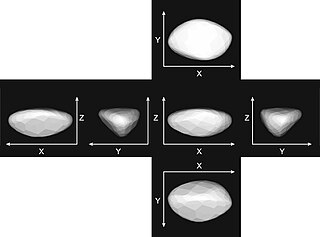
11351 Leucus is a mid-sized Jupiter trojan from the Greek camp, approximately 40 kilometers in diameter. It is a target of the Lucy mission, scheduled for a flyby in April 2028. The assumed D-type asteroid is an exceptionally slow rotator with a rotation period of 466 hours. It was discovered on 12 October 1997 by the Beijing Schmidt CCD Asteroid Program (SCAP) at Xinglong Station in the Chinese province of Hebei, and later named after the Achaean warrior Leucus from Greek mythology.

21900 Orus is a Jupiter trojan asteroid from the Greek camp, approximately 53 kilometers in diameter, and a target of the Lucy mission to be visited in November 2028. It is among the 100 largest Jupiter trojans and has a rotation period of 13.5 hours. It was discovered on 9 November 1999, by Japanese amateur astronomer Takao Kobayashi at his private Ōizumi Observatory in Gunma Prefecture, Japan, and later named Orus after a slain Achaean warrior from the Iliad.
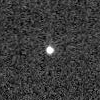
15094 Polymele is a primitive Jupiter trojan from the Greek camp, approximately 21 kilometers in diameter. It is a target of the Lucy mission with a close flyby planned to occur in September 2027. It was discovered on 17 November 1999, by astronomers with the Catalina Sky Survey at Mount Lemmon Observatory, Arizona, in the United States. The P-type asteroid has a rotation period of 5.9 hours and highly flattened shape. It was named after Polymele from Greek mythology, the wife of Menoetius and the mother of Patroclus. In 2022, it was reported to have a natural satellite approximately 5 kilometers in diameter.
57868 Pupin is a dark Erigonian asteroid and slow rotator from the inner regions of the asteroid belt, approximately 3.5 kilometers in diameter. It was discovered on December 17, 2001, by astronomers of Near-Earth Asteroid Tracking (NEAT) at the Palomar Observatory in California, United States. The asteroid was named after Serbian–American physicist Mihajlo Pupin.
9799 Thronium, provisional designation: 1996 RJ, is a large Jupiter trojan from the Greek camp and the parent body of a small, unnamed asteroid family (006), approximately 68 kilometers in diameter. It was discovered on 8 September 1996, by American astronomer Timothy Spahr at the Catalina Station of the Steward Observatory near Tucson, Arizona, in the United States. The assumed C-type asteroid belongs to the 50 largest Jupiter trojans and has a relatively long rotation period of 21.52 hours. It was named for the ancient Greek city of Thronium mentioned in the Iliad.








